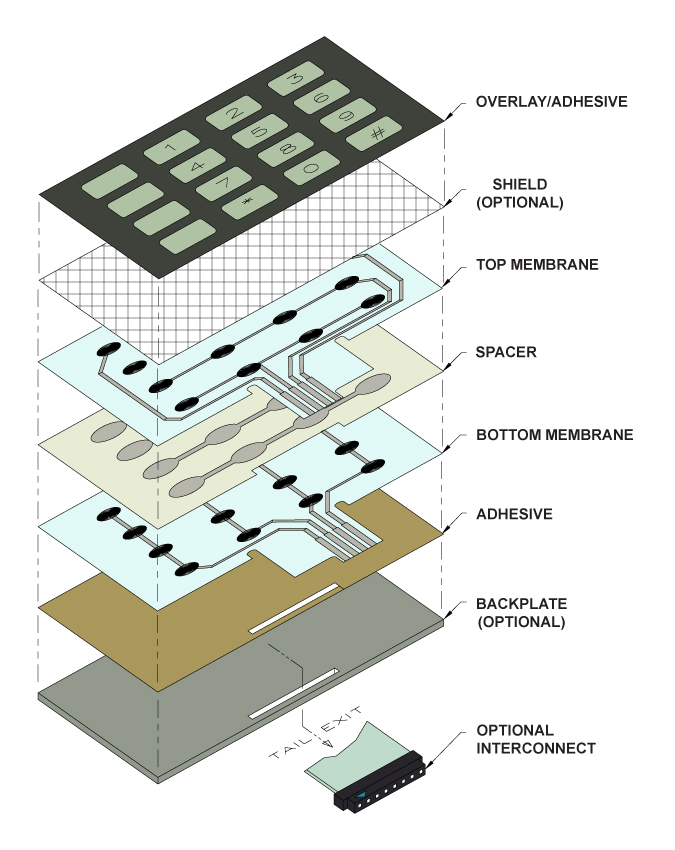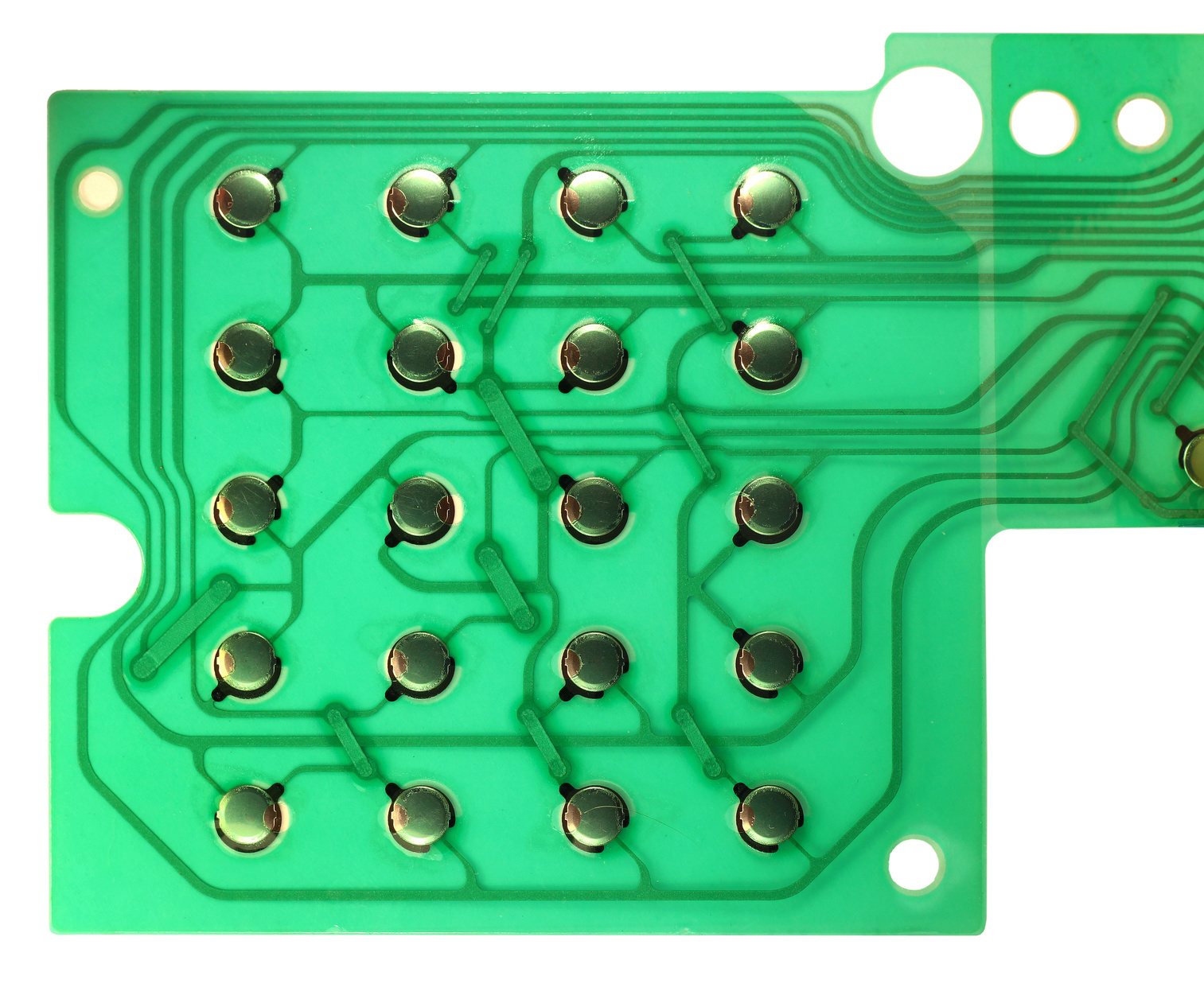How a Membrane Switch Boosts Customer Experience and Gadget Efficiency
How a Membrane Switch Boosts Customer Experience and Gadget Efficiency
Blog Article
Understanding the Capability of Membrane Layer Changes for User User Interface Tools
The functionality of membrane layer switches over represents a considerable development in individual interface style, combining effectiveness with aesthetic convenience. As sectors increasingly prioritize individual experience, understanding the nuances of membrane layer button modern technology comes to be vital.
What Are Membrane Layer Switches?
Membrane switches are ingenious user interface tools that help with customer communication with electronic equipment. These functional parts include several layers, consisting of a visuals overlay, spacer, and a printed circuit layer. The style enables a seamless combination right into numerous electronic gadgets, boosting both the visual and useful elements of customer interfaces.
Membrane layer buttons are typically used in a wide variety of applications, from family home appliances to commercial machinery and medical gadgets. Their building and construction normally features a thin account, making them an ideal selection for portable layouts. The tactile responses provided by these buttons can be crafted to fulfill certain customer preferences, making certain effective interaction between the user and the device.
Durability is one more considerable benefit of membrane switches, as they are immune to dust, moisture, and chemicals, which enhances their life expectancy popular environments. Furthermore, these switches can be customized in terms of form, dimension, and visuals style, enabling branding and user-specific functions. On the whole, membrane layer changes represent a functional service for enhancing customer experience in digital devices, integrating functionality with visual allure in an efficient manner.
How Membrane Changes Work
Operating on a simple principle, membrane layer switches make use of a split construction to register customer input properly. Each switch includes multiple layers, consisting of a printed circuit layer, a spacer layer, and a leading visuals layer, which are developed to collaborate flawlessly. When a user presses the top layer, it compresses the spacer layer, bringing the conductive aspects of the circuit layer right into contact with each various other.
This contact creates a closed circuit, indicating the gadget to carry out a details feature. The style enables numerous configurations, consisting of responsive feedback, which can enhance the user experience by offering a physical sensation upon activation. The materials made use of in membrane layer buttons usually consist of adaptable substratums, such as polyester or polycarbonate, which ensure sturdiness and durability versus deterioration.

Trick Benefits of Membrane Switches

One more significant benefit is their density. Membrane buttons are thin and light-weight, which enables manufacturers to save room in their gadgets without sacrificing capability. This attribute is especially valuable in applications where weight and volume are important considerations.
In addition, membrane switches are immune to dirt, wetness, and chemicals, boosting their toughness. This resilience extends their life-span and reduces the requirement for constant replacements, leading to cost savings with time.
Additionally, the responsive feedback supplied by membrane layer switches can be enhanced to enhance individual communication. They can consist of attributes such as raised buttons or distinct clicks, enhancing functionality and customer experience.
Applications Across Industries
Individual interface devices making use of membrane layer switches are widespread in a large array of markets, showcasing their adaptability and performance. Membrane Switch. In the clinical field, membrane buttons are essential to gadgets such as analysis devices and patient tracking systems, where their durability and ease of cleaning are essential for maintaining health standards. In the auto sector, these switches are utilized in control panel controls and infotainment systems, offering a sleek and modern user interface for customers.
In addition, the customer electronics sector gain from membrane layer buttons in devices and portable devices, where compact style and easy to use user interfaces improve individual experience. Industrial applications additionally utilize membrane layer switches for control panels in equipment and automation systems, highlighting their toughness and resistance to harsh settings.
In the aerospace and protection markets, membrane layer buttons are used in cockpit controls and equipment, where reliability and efficiency under severe problems are extremely important. Additionally, basics the pc gaming sector increasingly includes membrane layer switches in controllers and arcade machines, adding to an appealing user experience. Overall, the convenience of membrane switches over allows their widespread usage across countless sectors, underscoring their relevance in modern customer interface style.
Future Patterns in Membrane Switch Innovation

Additionally, using innovative products, such as polycarbonate and polyester movies, is expected to rise, giving boosted durability and resistance to environmental stressors. These products contribute to the total longevity of membrane switches, making them ideal for harsher industrial applications.
In addition, the unification of wise innovation, including IoT connectivity, will enable membrane switches to communicate with various other tools and systems, facilitating a much more interactive user experience. This fad straightens with the growing demand for wise devices across numerous fields, from medical care to customer electronic devices.
Last but not least, modification choices are expected to expand, allowing producers to produce bespoke services tailored to particular customer requirements and choices. These growths will certainly position membrane switches as necessary elements in the development of individual interface technology.
Verdict
In verdict, membrane changes stand for a pivotal development in customer interface technology, offering a reliable and versatile remedy for diverse electronic applications. As innovations in product scientific research and touch noticing modern technologies continue, the functionality and applicability of membrane layer buttons are anticipated to increase, official site strengthening their importance in modern-day click to read more digital tools.
Report this page